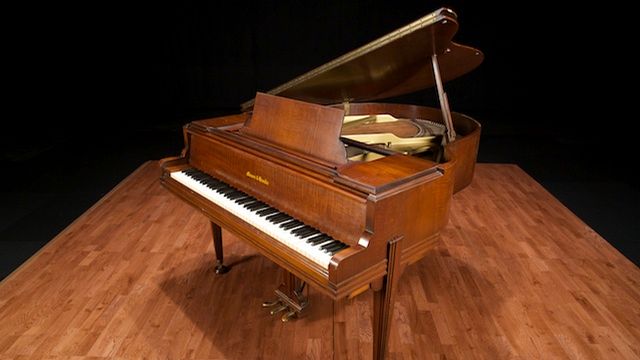

One of his most famous innovations is the Tension Resonator, a large metal spider which is attached to the rim underneath the piano. He completely redesigned the scales for all of the pianos produced by the company. Gertz was one of the engineers taken on board by Mason & Hamlin in 1895. When building this new area of their company, they understood that hiring the best engineers in the business was essential to the company’s overall success. The popularity of the piano led to a transition away from their successful organ manufacturing. Early Mason & Hamlin pianos utilized a ‘screw stringer’ design which was later discontinued due to cost and a lack of adoption by the rest of the industry. They began developing their piano designs using a slow, meticulous process, fine materials and a keen attention to every detail. This then led to their entry into the piano market in 1881. Success in this market enabled them to expand. based company began small with limited capital and benefited from individual attention to detail and limited production. This is where the Mason & Hamlin company began – as an organ manufacturer. As a gifted inventor, he developed a method of voicing organ reeds to imitate the sounds of various other instruments. “…I desire to play the Mason & Hamlin pianos…I feel that if I have succeeded in making even the slightest impression upon the public by my playing, a great part of my success is due to your instruments.”Įmmons Hamlin’s skills were not musical but rather mechanical. His father Lowell Mason was considered the ‘father of American church music’ and was known worldwide as a respected composer and publisher of hymns. His family members were descendants of pilgrims who crossed over to the continent on the Mayflower. Henry Mason was an accomplished pianist and came from a family steeped in American and musical history. The early days of Mason & Hamlin drew upon each of the men’s individual skills. Henry Mason and Emmons Hamlin came from different backgrounds which were of great benefit to their new company. The Founders & Engineers During The Early History Created one year after the founding of Steinway & Sons in 1854, Mason & Hamlin quickly asserted themselves as a company dedicated to handcrafted quality and today is one of only two fully operational piano manufacturers in the United States today (with the other being their longtime competitor, Steinway). However, it would be very remiss to ignore the contributions and the ongoing history of another leading piano maker, Mason & Hamlin. Steinway has long enjoyed a spot at the top of American piano manufacturers in both artists’ use and public opinion. Now normally, the first name to come to mind when thinking of premium pianos is probably the venerable Steinway & Sons company. We’ve shown it below.From 1854 to Today | Mason & Hamlin The tale of the Mason & Hamlin’s rise to the top of the piano world is an interesting piece of history, dating back to the mid 19 th century. In fact, the Discovery Channel filmed an entire segment on Mason’s factory process for “How Its Made”. Not every piano builder considers the precision of an instrument to be critical to the essence or ‘soul’ of its pianos, but at Mason, on every single floor of their 6-story factory building, you can observe the commitment to perfection. Very few woodworking companies in the world can claim a factory tolerance of 0.004″, as Mason can, and it’s baked right in to the company’s philosophy.

Mason & Hamlin has elevated the art of piano building to a new standard of precision.


 0 kommentar(er)
0 kommentar(er)
